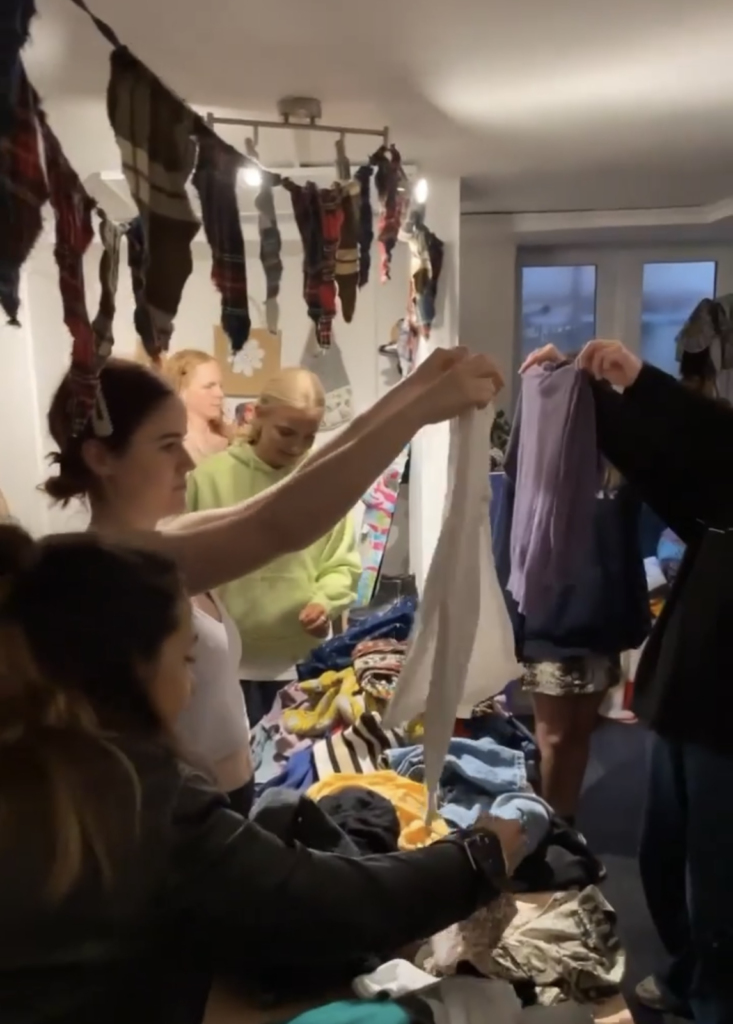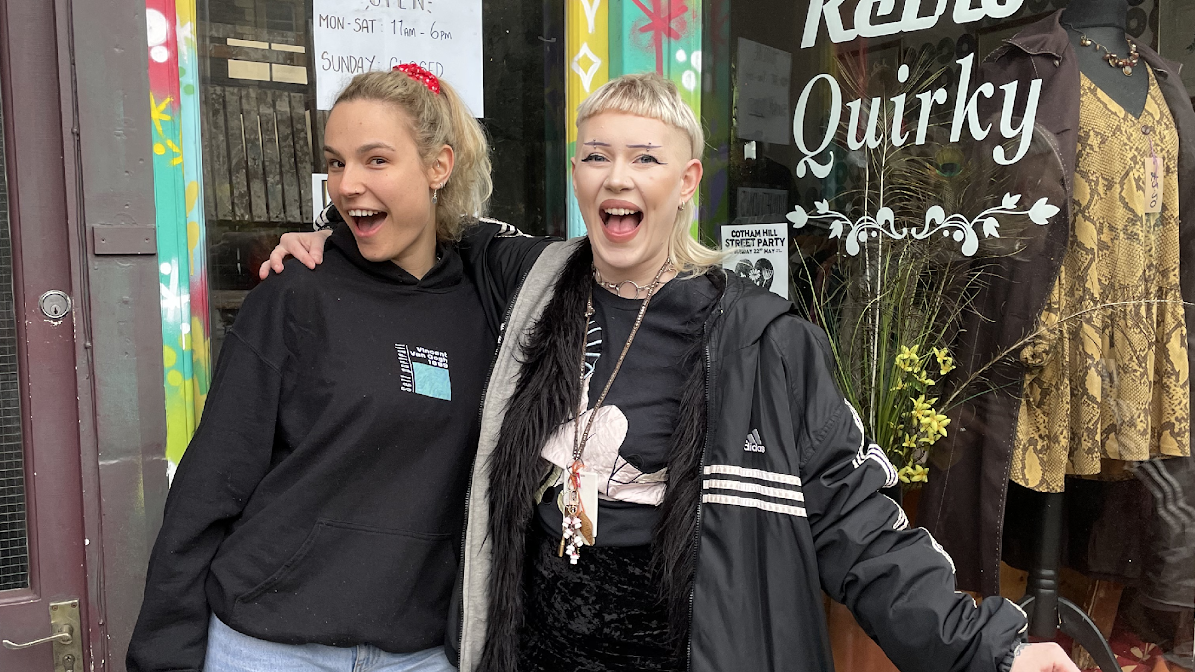By Annabel Roest.
I knew going into 2022 that my chosen New Year’s Resolution would be a hard one to see through, but I never expected it to be so rewarding.
The start of the new year marks a chance for us to work towards new successes, a time for us all to reassess our goals and what we want to achieve in the upcoming year. However, it also marks the chance to reflect on our previous New Year’s resolutions.
Last January, I decided to challenge myself to reject the temptations of buying first hand clothing and instead attempt to replace this by only buying pre-loved garments. My mission was simple – I would buy no brand-new clothes except for underwear, socks, and swimming costumes for the next 12 months. I set this goal to reduce my personal carbon footprint and contribution to the negative environmental effects brought about by incessant fast-fashion purchasing. In fact, the fashion industry is considered by the United Nations Conference on Trade and Development (UNCTAD) as one of the most polluting industries in the world.
Sadly, this year it has become obvious to me that fast-fashion is not the only problem. It is overconsumption that is harming the planet.
Today, we thrive on instant gratification. We can have practically anything we want 24 hours after ordering it, eat whatever we want in under an hour and even find a romantic partner instantly thanks to apps like Tinder. Our planet simply cannot sustain the waste and pollution coming from this level of production. In a world where everything is so instant, we need to put the brakes on our behaviour and consider if the things we buy will really enhance and enrich our lives, or if it can wait another 6 months – using and making the most of what we already have.
More and more of us are realising the importance of our consumer choices regarding their effects on the planet. According to the Euromonitor 2022 Consumer Trends Report, “there is no gap between climate awareness and intention to act”; an extremely positive sign. This can only lead to greater, more sustainable changes and alternatives going forward.
67% of consumers tried to have a positive impact on the environment through their everyday actions in 2021, with the likes of myself and many others joining their ranks in the past year. With the rise of the ‘Climate Changer’ consumer trend, green activism and low-carbon lifestyles are around to stay. It is our responsibility to try to adapt our consumer choices to protect the planet.
Second-hand clothes shopping constitutes part of ethical consumerism by attempting to minimise or eliminate harmful effects to the environment or society by reducing clothing disposal, and on that basis, I felt that this would be a great way of doing my part whilst challenging my self-discipline.

In 2021 I lived in Milan for a period of time for a year abroad from my degree. I was very much a shopaholic and was living in one of the fashion capitals of the world. I was surrounded by gorgeous people wearing amazing clothes and I felt inspired and excited to be around such good taste. I would do regular Zara hauls and check out the new arrivals each week, to make sure I was staying on top of the trends and trying to look (nearly!) as good as the people walking down the streets of Milan. After a couple of months, I began to question the quality of the Zara garments. The plastic shoes would break, and the fabrics of the clothes were not as comfortable or durable as I had expected. A family friend recommended that I check out a couple of the second-hand designer shops that Milan was famous for, my personal favourite being ‘Cavalli Nastri’. This recommendation was probably the biggest and best wakeup call I had. I found amazing pieces for even better prices and began to understand that companies like Zara and H&M, are not only deeply harming and changing the face of the environment, but the fashion world too.
Zara has advertised itself as a shop selling medium quality fashion clothing at cheap rates ever since it was created. Compelled to research, I discovered that Zara could generate a new design and have the finished product in shops in four to five weeks for completely new designs, or two weeks for changes made to already-existing products. Comparatively, the production cycles of other typical clothing retailers could take up to six months for concept and design and up to three months for manufacture. Small, regular shipments and restrictions on how long products can be exhibited and sold in stores, as well as the company’s insistence that its stores keep a minimum quantity of stock openly visible, all contribute to the feeling that one should “purchase now or regret later.” This kind of trickery is what keeps Zara such a big player within fast fashion. The research I carried out on this topic was deeply shocking. I was part of the problem.
Upon returning to Bristol in September 2021, I established a partnership with The Emporium of Loveliness, a charity shop who supports the charity Empower the Gambia. Through our partnership, we hosted a series of monthly clothes swaps where young women would bring a minimum of 5 pieces to the swap, and we would put them on a table and start swapping with one another. There was a donation policy for the entry fee, letting people give what they could, and leftover unwanted pieces would then be donated directly back to the charity shop for merchandising. This was an incredibly successful initiative and established a lovely network of like-minded individuals. It encouraged us all to consider our environmentally-conscious future purchasing choices, instead opting to contribute to a small-scale circular economy and avoid first-hand and fast-fashion consumption. I was extremely proud to have worked alongside the Emporium and relished each event, meeting new and enthusiastic faces each time.

Even after moving to Switzerland, where far fewer second-hand shops are readily available than Bristol, I have found some great spots to buy pre-loved bits and have started many conversations with my friends here about making better choices, which don’t compromise their spending habits or preferences but gets them to think before buying, which is something we all should do more of. That was my main aim, to encourage people to think about whether they really need something or are just buying it for the sake of buying. This is because I’ve been there, and now as I sell much of my wardrobe on Vinted, I often kick myself for buying things that I’ve never worn, but at least by reselling on platforms such as Vinted, they will be given a new life and I am also reducing my own personal overconsumption. So, what started at the beginning of 2022, as a fight against fast-fashion, has led me to the realisation that fast-fashion is just the tip of the iceberg.
Let’s hope that this new year brings about a greater awareness of the need for responsible consumption and production. I hope we can all make better, more informed, purchasing choices. Are you looking for a resolution to help the planet as well as yourself? Think about where your clothes are coming from, and where they’re going. Try out being a better steward of the planet, for this generation and for the many to come.



